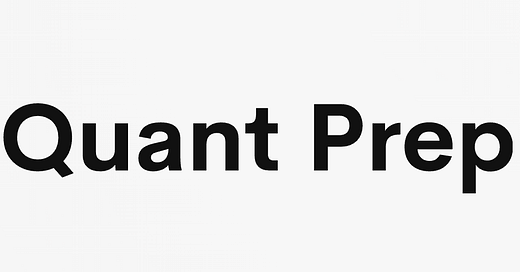Every textbook teaches that bond prices and yields have an inverse relationship:
When bond prices fall, yields rise.
When bond prices rise, yields fall.
But I never truly understood why until recently. Let’s break it down in this article.
First, let’s examine the two components of bond returns.
Bond returns: Two key components
A bond’s yield (i.e., its return) can be broken down into two components:
Capital Gains
If you buy a bond at a price below its face value, say at 95 cents on the dollar, and hold it until maturity, you’ll redeem it at its face value of 100 cents. This results in a capital gain of 5 cents, reflecting the bond's appreciation over time.Interest Payments
Bonds typically pay periodic interest, known as the coupon. For example, a bond with a 5% annual coupon, paying semi-annually, will distribute 2.5% of the face value every six months.
The yield displayed when purchasing a bond represents your return if you hold it until maturity.
Why do yields increase when bond prices fall?
This inverse relationship can be understood by examining how interest rates affect the value of a bond's future cash flows.
First you should know that a bond’s instrinic value is the sum of all of its future cash-flows discounted back to today. The discount value of the cash flows depend on the risk-free rate.
When the risk-free rate increases, the present value of a bond's future payments (the coupon and face value) decreases because they are discounted at a higher rate. As a result, the bond’s price falls.
Since the bond is now selling for a lower price, the capital gains you will receive at maturity increase. This causes the bond’s yield to rise.
Why US Treasuries are not actually risk-free?
Now that you understand the relationship between bond prices and yields, let’s discuss why you can still lose money owning US Treasuries - even though they are considered “risk-free.”
US Treasuries are often seen as the benchmark for the risk-free rate because it’s extremely unlikely that the US government will default on its bonds.
However, Treasuries are only truly risk-free if held to maturity - otherwise, you can still lose money.
This is because US Treasuries trade like any other security, with their mark-to-market value fluctuating daily. These fluctuations depend on changes in yields (as discussed earlier).
An Example
Suppose you buy a 5-year Treasury bond for 90 cents, with a 4% yield. If you hold it to maturity, you will earn this 4% yield with near certainty.
However, if you sell the bond before maturity, you could lose money.
Let’s say you hold the bond for one month, and then yields rise by 100 basis points to 5%. Because bond prices fall when yields rise, your Treasury may now be worth only 80 cents. If you sell at this price, you would incur a 10-cent loss (ignoring any accrued interest).
I used to struggle with this concept, so I hope this explanation makes sense!
Interview Guide (OUT NOW)
What’s inside the Quant Prep Interview Guide:
Time-Saving Strategies: Proven tips to land interviews efficiently, skipping the grind of endless applications.
Interview Mastery: A step-by-step breakdown of the process, packed with best practices and winning strategies.
Salary Insights: A detailed list of front-office compensation figures.
Industry Directory: A comprehensive roundup of top financial services firms.
Real-World Prep: 6 authentic interview experiences, covering 18 rounds of questions.
Extensive Question Bank: 138 carefully curated questions spanning Finance, Probability & Statistics, Math & Linear Algebra, Python, Algorithms, and HR.
HR Excellence: Tested techniques to shine in HR interviews.
Now on Sale: Just $21.60 (VAT included)—a steep discount from the regular $39.60.
Ready to land a $200k+ quant role? Grab your copy HERE.
Other Media
Twitter: @quant_prep
Medium: @quant_prep
LinkedIn: Quant Prep
Free Stoikov Market Making Code: Here
Free BTC Options Notebook: Here
Free CV template: Here




